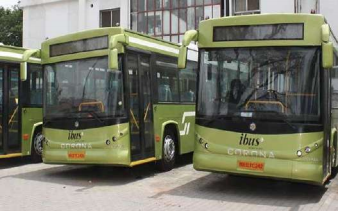
Launched on Gandhi Jayanti in 2014, the Swachh Bharat Mission (SBM) has come a long way. Aimed at transforming the behavior of citizens on issues of cleanliness and sanitation, the program has changed the way India deals with waste management. Solidwasteindia.com looks at the five best practices and innovations in urban waste management that have contributed towards achieving the mission’s goals.
- Madras Waste Exchange-online trading platform for segregated waste, Chennai, Tamil Nadu
In December last year, Chennai in Tamil Nadu became the first city in India to have an online waste exchange for municipal solid waste. The city generates more than 5,000 tonnes of municipal solid waste in its 15 zones covering an area of 426 sq. km.
The Madras Waste Exchange, which is both a web portal and an application has been conceptualised by the Smart City Mission, with support from the union Ministry of Housing and Urban Affairs. It started as an idea to act as a platform to bridge the corporation’s segregated waste and potential buyers such as waste entrepreneurs and the 2,600 scrap dealers across the city, bulk waste generators including schools, colleges and office complexes.
For more information, click here.
- Model solid and liquid waste management initiative, Ambikapur, Chattisgarh

While Chattisgarh was declared India’s cleanest State in the Swachh Survekshan Survey this year, Ambikapur, a small town of about 45 lakh people in Northern Chattisgarh, has become a role model for all the urban local bodies (ULBs) in Chhattisgarh for its successful solid liquid resource management (SLRM).
The model, was envisioned by C Srinivasan of India Green Service, is considered cost-effective, scientific and sustainable. While it has helped generate hundreds of green jobs by employing women workers from Self-Help groups, it has also enabled the city administration to reclaim a dumping yard spread across 16 acres outside the city and develop it into a sanitation park.
Women workers carry out door-to-door collection of waste in designated bins across the 48 wards of the city and take it to the 17 SLRM centres and one tertiary segregation centre set up as part of the project. The organic waste is segregated and used to make compost while the inorganic waste is further segregated at the tertiary segregation centre. Resources generated through the SRLM centres are deposited in a make-shift warehouse, called the ‘Treasury’ and are sold off periodically. Each worker receives a share of the revenue according to its contribution to the resource quantity that was sold.
For more information, click here.
- Converting waste to energy in Petlad, Gujarat

Petlad is a town in Gujarat’s Anand district. Ensuring door-to-door segregation and collection through battery powered rikshaws, the municipality has set up a fertilizer plant for recycling wet waste. On an average, around 6.5 ton of wet waste is collected and processed nearly 1.5 ton of manure each day. This manure is sold in the market and used for municipal gardens.
The Petlad Municipality has installed plant for converting waste into energy. The waste plastic is decomposed at high temperature in a pyrolysis plant and produces Petro Alternate Fuel.
The segregated plastic, which is segregated at source, is shredded into the Aglo machine and heated at a high temperature in a specialised chamber. The gas created from the heated plastic is condensed and transformed into oil. The Petlad Municipality uses this oil in low speed diesel engines such as in a de-watering pump set, mud-pump set, and generators. The calorific value of the oil is same as diesel. The plastic waste is well managed with this plant and turned into the energy.
For more information, click here.
- Integration of Waste Management into public transport, Indore

Declared as India’s cleanest city for the fourth consecutive time in 2020, Indore in Madhya Pradesh has emerged as a pioneering model in solid waste management.
The Indore Municipal Corporation (IMC) developed a cost effective and ultra-modern bio-methanation processing plant on a public-private partnership (Mahindra Waste to Energy Solutions Ltd) to generate bio-CNG and compost to process the organic waste generated from the fruit and vegetable market in the city.
One of the largest markets in Madhya Pradesh, the market generated a total of 20 (TPD) of organic waste and the processing costs were pegged to increase from Rs 3 crore to 7.2 crore every year over the next five years. The plant utilizes 20 MT per day of fruit and vegetable waste generated from the wholesale market and converts it into Bio-CNG, compost and electricity from Bio-CNG for captive purpose. This was the first indigenous biogas cleaning and separation unit established to purify methane up to a purity level of 95% in the country.
The bio-CNG produced is then sold at a subsidised rate to the Indore Public Transport Company and is used to power CNG buses run in the city. This has enabled reducing the carbon footprint of the city and has been operation since 2017.
For more information, click here.
- Restoring the pristine landscape, Leh in Laddakh
Leh town has a population of 31,000 and is witnessing the challenges of rapid urbanisation. A popular tourist destination with breathtaking views of the Himalayan mountains, Leh has seen an exponential rise in tourism over the last decade with nearly 2.7 lakh tourists visiting the region every year. Leh alone collects 16-18 tonnes of waste during the tourism months in Laddakh.
Project Tsangda was launched in 2017, led by bureaucrat Avny Lavasa who was posted as district administrator in Laddakh, with an aim to protect the fragile ecology of the region and enabling a waste management system in the rural and semi-rural areas of Laddakh.

The project has been successful in setting a waste management system in the region as well ensuring community participation that enables effective waste segregation at the household level.
While wet waste in the cold and mountainous region is minimal, dry waste from households and shops is collected and converted into resources rather than dumped into giant landfills that remain an eyesore and pose environmental risks. For example, discarded glass bottles and other glass pieces other broken glasses were also reused in construction of roads and buildings by government agencies generating a considerable amount of revenue for the administration managing the project.
The administration also collects a user fee from citizens to fund the operation of collection vehicles as part of the process.
The ammonisation is now in the process of expanding the project to other remote parts of the area that face challenges of waste management but lack the resources to do so.
For more information, click here.



